10 Things: Calling All Pluto Lovers
10 Things: Calling All Pluto Lovers
June 22 marks the 40th anniversary of Charon’s discovery—the dwarf planet Pluto’s largest and first known moon. While the definition of a planet is the subject of vigorous scientific debate, this dwarf planet is a fascinating world to explore. Get to know Pluto’s beautiful, fascinating companion this week.
1. A Happy Accident

Astronomers James Christy and Robert Harrington weren’t even looking for satellites of Pluto when they discovered Charon in June 1978 at the U.S. Naval Observatory Flagstaff Station in Arizona – only about six miles from where Pluto was discovered at Lowell Observatory. Instead, they were trying to refine Pluto’s orbit around the Sun when sharp-eyed Christy noticed images of Pluto were strangely elongated; a blob seemed to move around Pluto.
The direction of elongation cycled back and forth over 6.39 days―the same as Pluto’s rotation period. Searching through their archives of Pluto images taken years before, Christy then found more cases where Pluto appeared elongated. Additional images confirmed he had discovered the first known moon of Pluto.
2. Forever and Always

Christy proposed the name Charon after the mythological ferryman who carried souls across the river Acheron, one of the five mythical rivers that surrounded Pluto’s underworld. But Christy also chose it for a more personal reason: The first four letters matched the name of his wife, Charlene. (Cue the collective sigh.)
3. Big Little Moon

Charon—the largest of Pluto’s five moons and approximately the size of Texas—is almost half the size of Pluto itself. The little moon is so big that Pluto and Charon are sometimes referred to as a double dwarf planet system. The distance between them is 12,200 miles (19,640 kilometers).
4. A Colorful and Violent History

Many scientists on the New Horizons mission expected Charon to be a monotonous, crater-battered world; instead, they found a landscape covered with mountains, canyons, landslides, surface-color variations and more. High-resolution images of the Pluto-facing hemisphere of Charon, taken by New Horizons as the spacecraft sped through the Pluto system on July 14 and transmitted to Earth on Sept. 21, reveal details of a belt of fractures and canyons just north of the moon’s equator.
5. Grander Canyon

This great canyon system stretches more than 1,000 miles (1,600 kilometers) across the entire face of Charon and likely around onto Charon’s far side. Four times as long as the Grand Canyon, and twice as deep in places, these faults and canyons indicate a titanic geological upheaval in Charon’s past.
6. Officially Official

In April 2018, the International Astronomical Union—the internationally recognized authority for naming celestial bodies and their surface features—approved a dozen names for Charon’s features proposed by our New Horizons mission team. Many of the names focus on the literature and mythology of exploration.
7. Flying Over Charon
This flyover video of Charon was created thanks to images from our New Horizons spacecraft. The “flight” starts with the informally named Mordor (dark) region near Charon’s north pole. Then the camera moves south to a vast chasm, descending to just 40 miles (60 kilometers) above the surface to fly through the canyon system.
8. Strikingly Different Worlds

This composite of enhanced color images of Pluto (lower right) and Charon (upper left), was taken by New Horizons as it passed through the Pluto system on July 14, 2015. This image highlights the striking differences between Pluto and Charon. The color and brightness of both Pluto and Charon have been processed identically to allow direct comparison of their surface properties, and to highlight the similarity between Charon’s polar red terrain and Pluto’s equatorial red terrain.
9. Quality Facetime

Charon neither rises nor sets, but hovers over the same spot on Pluto’s surface, and the same side of Charon always faces Pluto―a phenomenon called mutual tidal locking.
10. Shine On, Charon

Bathed in “Plutoshine,” this image from New Horizons shows the night side of Charon against a star field lit by faint, reflected light from Pluto itself on July 15, 2015.
Read the full version of this week’s ‘10 Things to Know’ article on the web HERE.
Make sure to follow us on Tumblr for your regular dose of space: http://nasa.tumblr.com.
More Posts from Monstrous-mind and Others
🔭🌃🌌
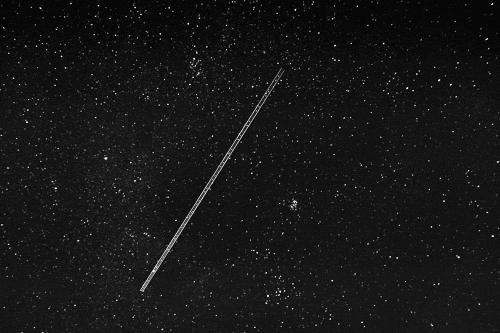
🍁🍂🎃🍂🍁

Calling all active fall blogs in spring 2020!
Please reblog! My dash needs more autumn on it 🍂
String Theory
String theory is a fascinating physical model in which all particles are replaced by one-dimensional objects known as strings. This theory says that we live in more than four dimensions, but we can not perceive them.
String theory, is a complete theory and unites quantum physics with Einstein’s general relativity.

On distance scales larger than the string scale, a string looks just like an ordinary particle, with its mass, charge, and other properties determined by the vibrational state of the string. In string theory, one of the many vibrational states of the string corresponds to the graviton, a quantum mechanical particle that carries gravitational force. Thus string theory is a theory of quantum gravity.

According to string theory, the reason we can not observe these dimensions is because they are very small and compact (smaller than the plank length 10 −35)


Compactification is one way of modifying the number of dimensions in a physical theory. In compactification, some of the extra dimensions are assumed to “close up” on themselves to form circles. In the limit where these curled up dimensions become very small, one obtains a theory in which spacetime has effectively a lower number of dimensions. A standard analogy for this is to consider a multidimensional object such as a garden hose. If the hose is viewed from a sufficient distance, it appears to have only one dimension, its length. However, as one approaches the hose, one discovers that it contains a second dimension, its circumference. Thus, an ant crawling on the surface of the hose would move in two dimensions.

Compactification can be used to construct models in which spacetime is effectively four-dimensional. However, not every way of compactifying the extra dimensions produces a model with the right properties to describe nature. In a viable model of particle physics, the compact extra dimensions must be shaped like a Calabi–Yau manifold

Another approach to reducing the number of dimensions is the so-called brane-world scenario. In this approach, physicists assume that the observable universe is a four-dimensional subspace of a higher dimensional space. In such models, the force-carrying bosons of particle physics arise from open strings with endpoints attached to the four-dimensional subspace, while gravity arises from closed strings propagating through the larger ambient space. This idea plays an important role in attempts to develop models of real world physics based on string theory, and it provides a natural explanation for the weakness of gravity compared to the other fundamental forces

One notable feature of string theories is that these theories require extra dimensions of spacetime for their mathematical consistency. In bosonic string theory, spacetime is 26-dimensional, while in superstring theory it is 10-dimensional, and in M-theory it is 11-dimensional. In order to describe real physical phenomena using string theory, one must therefore imagine scenarios in which these extra dimensions would not be observed in experiments.

The original version of string theory was bosonic string theory, but this version described only bosons, a class of particles which transmit forces between the matter particles, or fermions. Bosonic string theory was eventually superseded by theories called superstring theories. These theories describe both bosons and fermions, and they incorporate a theoretical idea called supersymmetry.

This is a mathematical relation that exists in certain physical theories between the bosons and fermions. In theories with supersymmetry, each boson has a counterpart which is a fermion, and vice versa.

There are several versions of superstring theory: type I, type IIA, type IIB, and two flavors of heterotic string theory (SO(32) and E8×E8). The different theories allow different types of strings, and the particles that arise at low energies exhibit different symmetries. For example, the type I theory includes both open strings (which are segments with endpoints) and closed strings (which form closed loops), while types IIA, IIB and heterotic include only closed strings.

Branes
In string theory and other related theories, a brane is a physical object that generalizes the notion of a point particle to higher dimensions. For instance, a point particle can be viewed as a brane of dimension zero, while a string can be viewed as a brane of dimension one. It is also possible to consider higher-dimensional branes. In dimension p, these are called p-branes. The word brane comes from the word “membrane” which refers to a two-dimensional brane
In string theory, D-branes are an important class of branes that arise when one considers open strings

D-branes are typically classified by their spatial dimension, which is indicated by a number written after the D. A D0-brane is a single point, a D1-brane is a line (sometimes called a “D-string”), a D2-brane is a plane, and a D25-brane fills the highest-dimensional space considered in bosonic string theory. There are also instantonic D(–1)-branes, which are localized in both space and time.
Duality
A striking fact about string theory is that the different versions of the theory prove to be highly non-trivial in relation. One of the relationships that exist between different theories is called S-duality. This is a relationship that says that a collection of interacting particles in a theory may in some cases be viewed as a collection of weak interacting particles in a completely different theory. Approximately, a collection of particles is said to interact strongly if they combine and deteriorate frequently and interact poorly if they do so infrequently. The type I string theory turns out to be equivalent by S-duality to the heterotic string theory SO (32). Likewise, type IIB string theory is related to itself in a non-trivial way by S-duality

Another relationship between different string theories is T-duality. Here one considers strings propagating around a circular extra dimension. T-duality states that a string propagating around a circle of radius R is equivalent to a string propagating around a circle of radius 1/R in the sense that all observable quantities in one description are identified with quantities in the dual description. For example, a string has momentum as it propagates around a circle, and it can also wind around the circle one or more times. The number of times the string winds around a circle is called the winding number. If a string has momentum p and winding number n in one description, it will have momentum n and winding number p in the dual description. For example, type IIA string theory is equivalent to type IIB string theory via T-duality, and the two versions of heterotic string theory are also related by T-duality.

Black holes
In general relativity, a black hole is defined as a region of spacetime in which the gravitational field is so strong that no particle or radiation can escape. In the currently accepted models of stellar evolution, black holes are thought to arise when massive stars undergo gravitational collapse, and many galaxies are thought to contain supermassive black holes at their centers.

Black holes are also important for theoretical reasons, as they present profound challenges for theorists attempting to understand the quantum aspects of gravity. String theory has proved to be an important tool for investigating the theoretical properties of black holes because it provides a framework in which theorists can study their thermodynamics.

The big bang theory doesn’t offer any explanation for what started the original expansion of the universe. This is a major theoretical question for cosmologists, and many are applying the concepts of string theory in attempts to answer it. One controversial conjecture is a cyclic universe model called the ekpyrotic universe theory, which suggests that our own universe is the result of branes colliding with each other.
Some things that string theory could explain: Neutrinos would have to have mass (minimum), Decay of Proton, New fields of force (short and long range) defined by some forms of calabi-yau, Explanations for Dark Matter.
sources: x, x, x, x, x, x

String theory is a very complex and broad area, so this post is only a summary. To better understand, I suggest you read Brian Greene’s books: The Elegant Universe and The Fabric of the Cosmo.

Siesta (by big andrei)

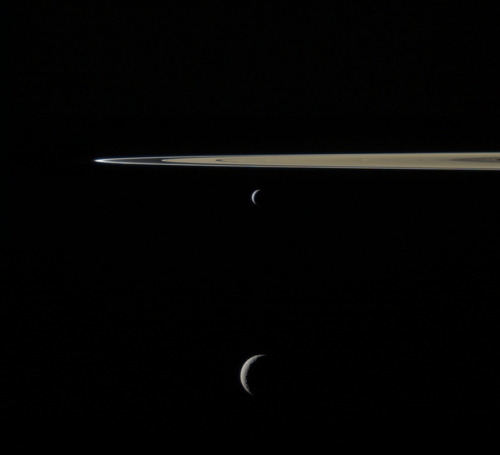
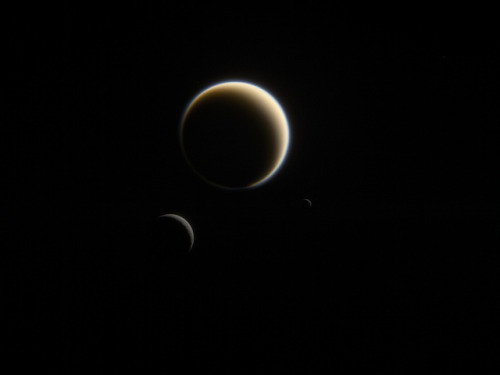
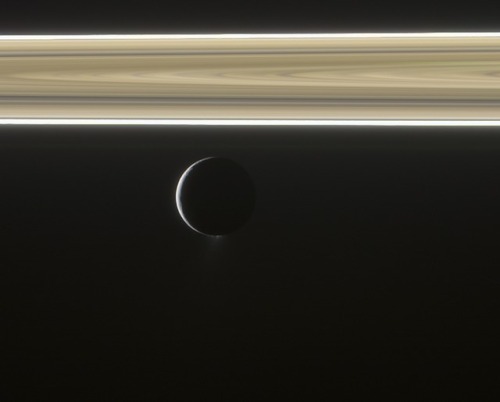
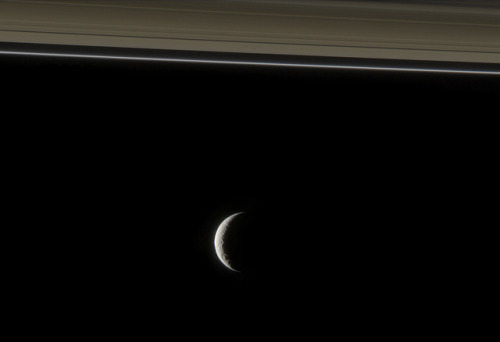
Saturn Rings and Moons: From left, the moons are Janus, Pandora, Enceladus, Mimas and Rhea. Following the images below, Enceladus and Tethys, Titan, Rhea and Mimas. Enceladus and Tethys.
by Gordan Ugarkovic
🐈⬛🐈🏔️🌌






Winter views, Sweden
stepsisters

🔭🌃🌌

M44, the beehive Cluster in Cancer constellation
Credit: Alan Dyer
🔭🌌☄️🪐

The Running Chicken Nebula comprises several clouds, all of which we can see in this vast image from the VLT Survey Telescope (VST), hosted at ESO’s Paranal site. This 1.5-billion pixel image spans an area in the sky of about 25 full Moons. The clouds shown in wispy pink plumes are full of gas and dust, illuminated by the young and hot stars within them.
Credit: ESO
-
 markwickens liked this · 1 year ago
markwickens liked this · 1 year ago -
 telefonsimp liked this · 3 years ago
telefonsimp liked this · 3 years ago -
 domin-ace liked this · 3 years ago
domin-ace liked this · 3 years ago -
 magicpeachrain liked this · 3 years ago
magicpeachrain liked this · 3 years ago -
 crawlingdeath6 liked this · 4 years ago
crawlingdeath6 liked this · 4 years ago -
 arofrogs liked this · 4 years ago
arofrogs liked this · 4 years ago -
 bicodeofhonour liked this · 4 years ago
bicodeofhonour liked this · 4 years ago -
 yrel-draenor liked this · 4 years ago
yrel-draenor liked this · 4 years ago -
 badluckninja reblogged this · 4 years ago
badluckninja reblogged this · 4 years ago -
 badluckninja liked this · 4 years ago
badluckninja liked this · 4 years ago -
 lunelightwhore liked this · 4 years ago
lunelightwhore liked this · 4 years ago -
 blackvelvano liked this · 4 years ago
blackvelvano liked this · 4 years ago -
 aviandemiwitch liked this · 4 years ago
aviandemiwitch liked this · 4 years ago -
 mikesummertimesadness liked this · 4 years ago
mikesummertimesadness liked this · 4 years ago -
 yxunamei liked this · 4 years ago
yxunamei liked this · 4 years ago -
 white-trash-balling reblogged this · 5 years ago
white-trash-balling reblogged this · 5 years ago -
 plaguedoctoranubis liked this · 5 years ago
plaguedoctoranubis liked this · 5 years ago -
 high-witchery reblogged this · 5 years ago
high-witchery reblogged this · 5 years ago -
 high-witchery liked this · 5 years ago
high-witchery liked this · 5 years ago -
 lilykinz liked this · 5 years ago
lilykinz liked this · 5 years ago -
 ck-ok liked this · 5 years ago
ck-ok liked this · 5 years ago -
 charonmelon reblogged this · 5 years ago
charonmelon reblogged this · 5 years ago -
 charonmelon liked this · 5 years ago
charonmelon liked this · 5 years ago -
 rudegandalf liked this · 5 years ago
rudegandalf liked this · 5 years ago -
 spectralmagpie liked this · 5 years ago
spectralmagpie liked this · 5 years ago -
 horny-for-evil liked this · 5 years ago
horny-for-evil liked this · 5 years ago -
 spoonilicious101 liked this · 5 years ago
spoonilicious101 liked this · 5 years ago -
 sothisblack reblogged this · 5 years ago
sothisblack reblogged this · 5 years ago -
 sigma-science liked this · 5 years ago
sigma-science liked this · 5 years ago -
 dwarfstardroid liked this · 5 years ago
dwarfstardroid liked this · 5 years ago -
 understuffed liked this · 5 years ago
understuffed liked this · 5 years ago -
 kage-ariku liked this · 5 years ago
kage-ariku liked this · 5 years ago -
 recluse-onthemoon liked this · 5 years ago
recluse-onthemoon liked this · 5 years ago -
 78-is-a-odd-number liked this · 5 years ago
78-is-a-odd-number liked this · 5 years ago -
 donstracci liked this · 5 years ago
donstracci liked this · 5 years ago -
 jane-grey reblogged this · 6 years ago
jane-grey reblogged this · 6 years ago -
 jane-grey liked this · 6 years ago
jane-grey liked this · 6 years ago -
 akilortwo liked this · 6 years ago
akilortwo liked this · 6 years ago
My ambition is handicapped by laziness. -C. Bukowski Me gustan las personas desesperadas con mentes rotas y destinos rotos. Están llenos de sorpresas y explosiones. -C. Bukowski. I love cats. Born in the early 80's, raised in the 90's. I like Nature, Autumn, books, landscapes, cold days, cloudy Windy days, space, Science, Paleontology, Biology, Astronomy, History, Social Sciences, Drawing, spending the night watching at the stars, Rick & Morty. I'm a lazy ass.
222 posts
